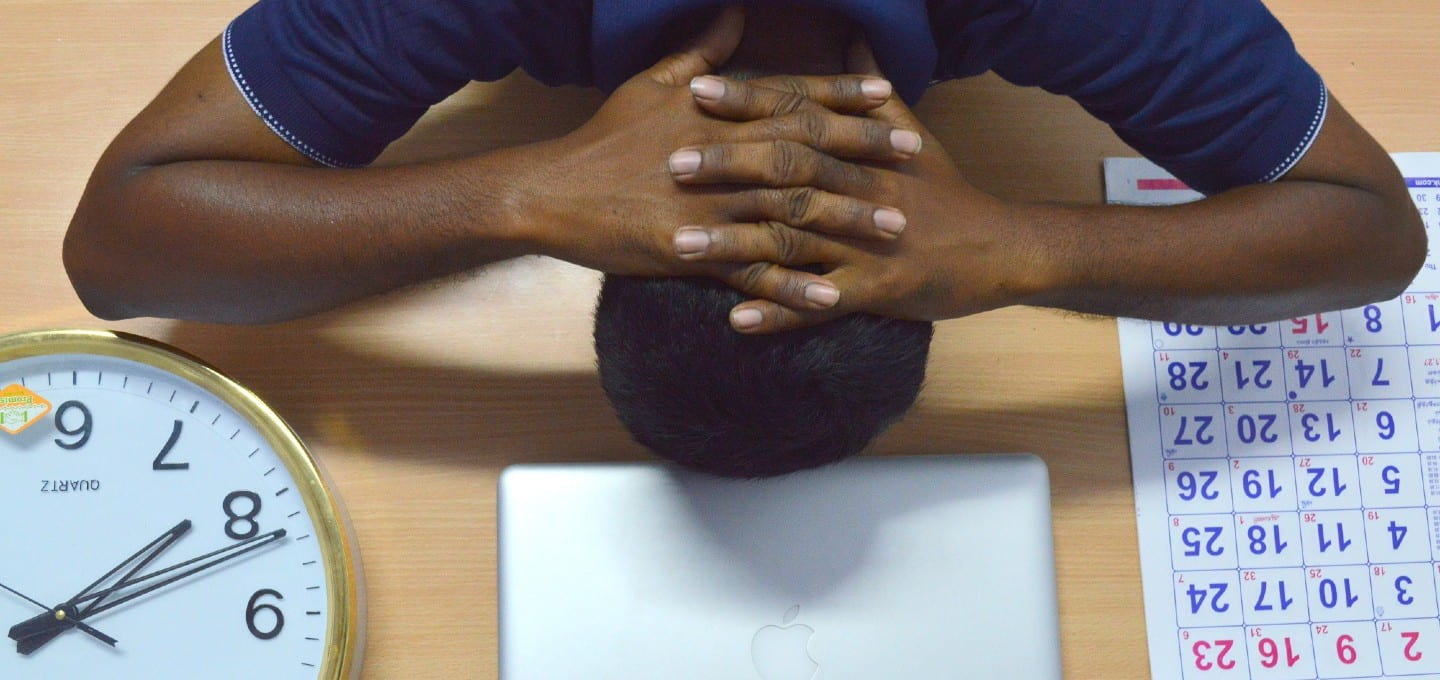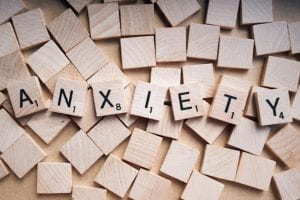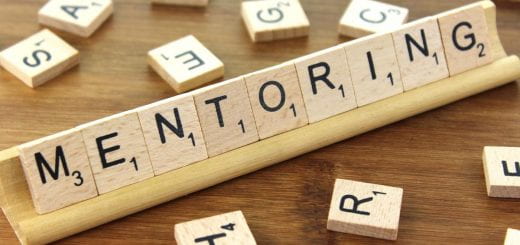Human Elements in the (Virtual) Classroom

Blog posts in the Keep Teaching series are written by CTL faculty and faculty from around the Institute to offer advice and inspiration during the COVID-19 disruption. For official Institute academic continuity resources, visit this page. You will also find more teaching and learning tips on the CTL Keep Teaching site.
by Dr. Vincent Spezzo, Program Manager of Teaching and Learning Online, Center for Teaching and Learning
 Ever since remote teaching preparations started, I’ve been reading through a deluge of articles surrounding best practices, pedagogical guidelines, and innovative solutions to rapid placement of courses into an at distance paradigm. The vast majority of these articles focus on transforming teaching materials, recommending technology solutions, and offering guidance on how to translate the in-person experience to a remote one. It seems everyone has great suggestions on how to reorient course content during the COVID-19 situation, but what strikes me is that there is less talk of the most important factor in the remote teaching situation; the people in the classroom. Despite all the technological wizardry being done, at the end of the day what will make a remote classroom feel like a beacon of stability in these turbulent seas will be the actions of the instructors and students who work together to make the remote classroom a success.
Ever since remote teaching preparations started, I’ve been reading through a deluge of articles surrounding best practices, pedagogical guidelines, and innovative solutions to rapid placement of courses into an at distance paradigm. The vast majority of these articles focus on transforming teaching materials, recommending technology solutions, and offering guidance on how to translate the in-person experience to a remote one. It seems everyone has great suggestions on how to reorient course content during the COVID-19 situation, but what strikes me is that there is less talk of the most important factor in the remote teaching situation; the people in the classroom. Despite all the technological wizardry being done, at the end of the day what will make a remote classroom feel like a beacon of stability in these turbulent seas will be the actions of the instructors and students who work together to make the remote classroom a success.
![]() As classes across the nation started up their at-distance operations, I began to find articles from my own discipline of Psychology talking about how individuals were coping with the COVID-19 anxiety in and outside of the classroom. Various articles I read were referring to the fight, flight, or freeze mechanisms and how our response to the COVID-19 threat can cause us to cycle through these various stages as our mind tries to figure out how we are supposed to react in this new situation. Some articles offered ways we can try to practice mindfulness and others offered tips on how to help students overcome their own anxieties around remote teaching. It was reassuring to know I wasn’t the only one concerned with the mental impact this would have on myself and others.
As classes across the nation started up their at-distance operations, I began to find articles from my own discipline of Psychology talking about how individuals were coping with the COVID-19 anxiety in and outside of the classroom. Various articles I read were referring to the fight, flight, or freeze mechanisms and how our response to the COVID-19 threat can cause us to cycle through these various stages as our mind tries to figure out how we are supposed to react in this new situation. Some articles offered ways we can try to practice mindfulness and others offered tips on how to help students overcome their own anxieties around remote teaching. It was reassuring to know I wasn’t the only one concerned with the mental impact this would have on myself and others.
Eventually, I found a very insightful article by Christina Cipriano and Marc Brackett (2020) called “Teacher, Interrupted: Leaning into Social-Emotional Learning Amid the COVID-19 Crisis”. I highly recommend to anyone teaching remotely during this time that they should give the article a quick read. In it, the authors discuss the impact COVID-19 is having on the mental state of not only instructors but also of their students. They go on to suggest a method for helping deal with this shared chronic stressor through evidence-based practices from Social and Emotional Learning (SEL) research.
One particular suggestion is to practice what they called the RULER approach. Cipriano and Brackett (2020) described the approach as one that “provides tools and resources grounded in the theory of emotional intelligence to promote the psychosocial health and well-being of educators and their students”.
The RULER approach is a process with the following steps to work through:
-
-
Recognizing emotions in self and others
-
Understanding the causes and consequences of emotions
-
Labeling emotions accurately
-
Expressing emotions appropriately
-
Regulating emotions effectively
-

While seemingly simplistic, I find that it’s nice to have a tool like the RULER approach at my disposal to help me navigate my own emotional reactions as well as those around me. In the coming weeks as instructors and their students work together through their remote classrooms while attempting to manage the continuous stressor of the COVID-19 situation in addition to the common stressors of course work, invariably misdirected emotional reactions will occur. Depending on how an individual is processing their stressors through fight, flight, or freeze, instructors could see things like students becoming overly argumentative about grades, straight-A students turning in work late or half completed, and others who become so overwhelmed in the face of a small obstacle that they express the desire to just give up. Surely some of these reactions will not be new to us, but their frequency, intensity, and origin may leave us surprised.
It is in moments like these when a tool like the RULER approach will help us better understand why these reactions are occurring, help us process our own emotional reaction, and let us work with students to get through this difficult time. Instead of writing an email scolding the straight-A student for being late, we can stop and recognize our feelings of frustration are with the situation in general and not that particular student. From there we can reach out to discover a student who has been so paralyzed by the increasing infection count that they lost track of which day of the week it was or another one who can only get online after 5pm because their parents are working from home. Through communication, we might help a student understand that the loss of audio during a web conference may have been the final straw that made them want to give up, but it is really their fear of losing their summer internship that is driving this feeling. Once we get control and understanding of the emotional reactions that occur we can begin to help work through them. We can find the need to be flexible with deadlines, we can help students identify alternate options for summer, and students can, in turn, help us feel a sense of normalcy in these abnormal times.
conference may have been the final straw that made them want to give up, but it is really their fear of losing their summer internship that is driving this feeling. Once we get control and understanding of the emotional reactions that occur we can begin to help work through them. We can find the need to be flexible with deadlines, we can help students identify alternate options for summer, and students can, in turn, help us feel a sense of normalcy in these abnormal times.
 Whether you use a tool like the RULER approach that Cipriano and Brackett (2020) have offered or another method, the key is to remember that excessive stressors are impacting everyone and everything we do. It’s too easy to let the distance that remote teaching requires drive a separation between you and your students; so now is the time to make extra efforts to embrace the humanity at the other end technology. It is the time to come together as a class to celebrate the human elements that allow remote teaching to work and, at the end of the day, those human elements will ultimately provide a path to overcome the extraordinary challenge that has been placed before us.
Whether you use a tool like the RULER approach that Cipriano and Brackett (2020) have offered or another method, the key is to remember that excessive stressors are impacting everyone and everything we do. It’s too easy to let the distance that remote teaching requires drive a separation between you and your students; so now is the time to make extra efforts to embrace the humanity at the other end technology. It is the time to come together as a class to celebrate the human elements that allow remote teaching to work and, at the end of the day, those human elements will ultimately provide a path to overcome the extraordinary challenge that has been placed before us.
References and Suggested Readings
Cassata, C. (2020, March 17). Being Mindful of Your Mental Health During the COVID-19 Outbreak. Retrieved March 30, 2020, from https://www.healthline.com/health-news/taking-care-of-your-mental-health-during-covid19-outbreak
Cipriano, C., & Brackett, M. (2020, March 25). Teacher, Interrupted: Leaning into Social-Emotional Learning Amid the COVID-19 Crisis – EdSurge News. Retrieved March 30, 2020, from https://www.edsurge.com/news/2020-03-18-teacher-interrupted-leaning-into-social-emotional-learning-amid-the-covid-19-crisis
Field, K. (2020, March 30). 10 Tips to Support Students in a Stressful Shift to Online Learning. Retrieved March 31, 2020, from https://www.chronicle.com/article/10-Tips-to-Support-Students-in/248380?utm_source=Iterable& utm_medium=email& utm_campaign= campaign_1113619& cid= at&source=ams& sourceId= 4686685
Harvard Health Publishing. (2018, May 1). Understanding the stress response. Retrieved March 30, 2020, from https://www.health.harvard.edu/staying-healthy/understanding-the-stress-response
Legg, T. J. (2020, February 21). Fight, Flight, Freeze: What This Response Means. Retrieved March 30, 2020, from https://www.healthline.com/health/mental-health/fight-flight-freeze




